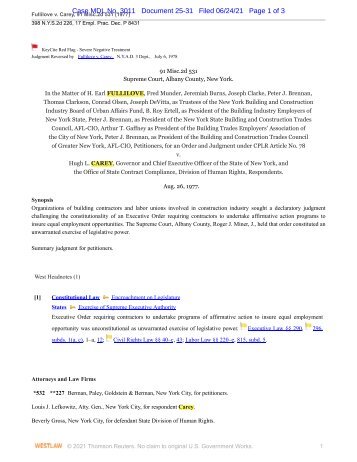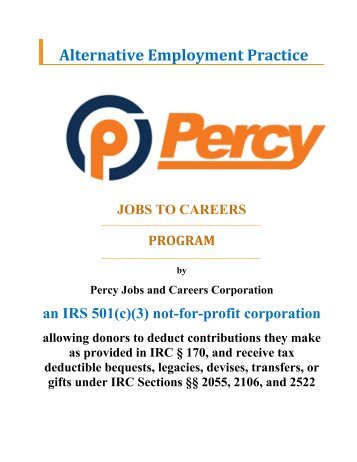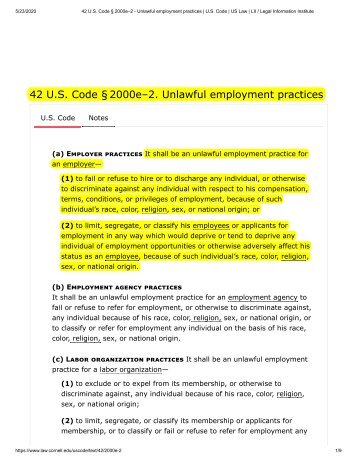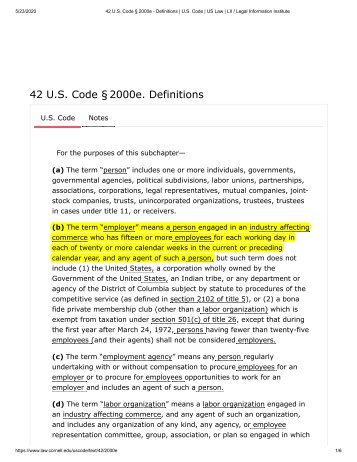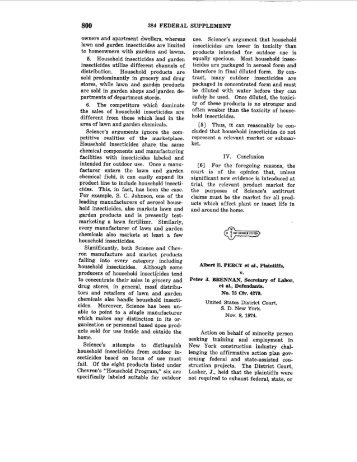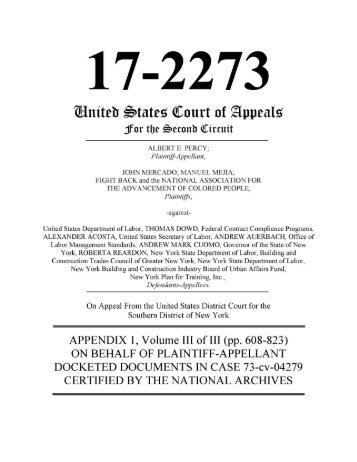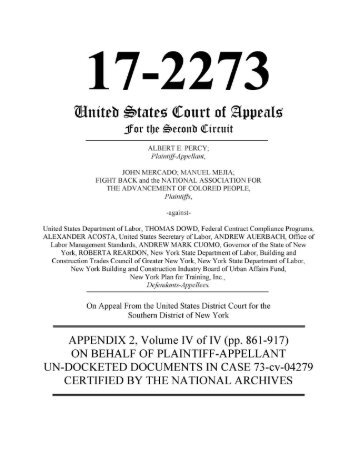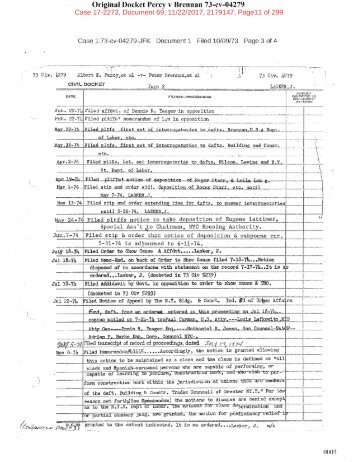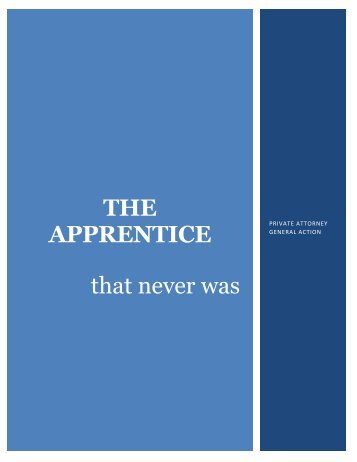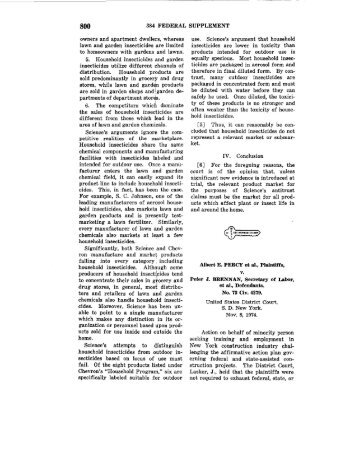The Percy Program
It is a fight to level the playing field to be able to compete for jobs and careers on the basis of skills and make available apprentice training to all. In 1973 Al Percy launched a class action lawsuit to give workers like him a chance to better their lot in life. It would also ensure the availability of skilled workers to build the infrastructure of the future.
Percy Action
education. It’s the
education. It’s the only way to stay on top today, while preparing for, and building, for tomorrow. 161. The Advocates explained that OJT is distinguished from education. OJT teaches and education provides tools to continually adapt to changes. An ancient truism says that if you give a man a fish, you feed him for a day, and if you teach a man to fish, you feed him for life. We go a step further: don’t just teach how to catch a fish, educate about the art and science of fishing. Go beyond the mechanics of catching a fish and enlighten by explaining the biological forces underlying the key elements of fishing. Give the big picture. Teach the reasons behind the design of the equipment. Teach about water currents, patterns in fish mating and feeding cycles, including economic and environmental trends that impact the life-cycles of fish. 162. The Advocates explained that this clichéd old saw about the fishermen illustrates the divide between apprenticeship on-the-job (OJT) and education. OJT is skill-oriented: it is learning how to fish. Education is concept-based — it is learning to see the big picture of why and how things work together. Both are necessary but without OJT the Percy Class never gains the experience to get a job and cannot get a job due to lack of experience. 163. The Advocates explained that training someone to do something is taskoriented, it is skill-based. You can train someone to increase their proficiency. A trained person is faster, better able to perform tasks competently and safely. OJT has a skill-based focus training people for performance, educating people for understanding. OJT takes full advantage of the new tools and systems coming onto the market by manufacturers. 164. The Advocates explained that OJT is the not only a less onerous alternative, it is the most beneficial and constitutionally acceptable alternative, and is just good business. 165. The Alternative Employment Practice is the "Percy Program" described here at XI. ALTERNATIVE EMPLOYMENT PRACTICE" paragraphs 153 – 218, (XVI. THE PERCY PROGRAM, paragraphs 241 – 274, XVII. COMPONENTS OF PERCY PROGRAM paragraphs 275 – 276, XVIII. 42
REGULATORY APPROVALS OF PERCY PROGRAM paragraph 277 – 280 of this Complaint, the subject of this Complaint. 166. The Percy Program as an Alternative Employment Practice was registered with the New York State Department of Labor effective January 1, 1991, and approved by the New York State Department of Insurance on December 6, 1994, registration and approvals which remain intact. 167. The Percy Program was offered as an Alternative Employment Practice by the Advocates, as hereinafter set forth, on behalf of the Percy Class as the complaining party under 42 U.S.C. §2000e–2(k)(1)(A)(ii), and is the required demonstration set forth at subparagraph (k)(1)(C). 168. The Percy Program as an Alternative Employment Practice answers the need for affirmative action to assist the Percy Class in obtaining competitive skills by utilizing registered apprenticeship meeting the requirements of the Fitzgerald Act (29 U.S.C. § 50 commonly known as the National Apprenticeship Act of 1937, section 1 (29 U.S.C. 50) under U.S. Department of Labor's Office of Apprenticeship and Training (BAT) and 29 C.F.R, Subt. A, Pt. 29 and Pt. 30. Apprenticeship is the process of learning a skilled occupation through both on-the-job training (practical, paid experience) and learning the related technical knowledge in a classroom. Candidates must be 18 years old, and possess a GED (the Percy Program will help a candidate obtain a GED). Enrollment must be done openly under the procedures established by federal and state regulations for Minimum Qualifications Review and Eligibility List Ranking using: educational achievement, work experience, seniority, job aptitude, oral interview, and general demographic inquiries to determine a score for ranking for eligibility to be enrolled in OJT and continuing education. 169. The Percy Program as an Alternative Employment Practice develops the skills of the class of persons recruited from within communities mired in poverty, the Percy Class, ready, willing and able to compete for paid OJT with related classroom instruction and continuing education provided as part of risk management, loss control and safety training by the Alternative Employment Practice. 43
- Page 1 and 2: THE APPRENTICE PRIVATE ATTORNEY GEN
- Page 3 and 4: The dilemma Lincoln was facing was
- Page 5 and 6: in the compromise of 1877 which end
- Page 7 and 8: often unable to keep their jobs and
- Page 9 and 10: Available Less Discriminatory Alter
- Page 11 and 12: UNITED STATES DISTRICT COURT for th
- Page 13 and 14: accepting Defendant New York State
- Page 15 and 16: ceased and the US withdrew from Sou
- Page 17 and 18: compliance with the New York State
- Page 19 and 20: A, Pt. 29 and Pt. 30. (the Fitzgera
- Page 21 and 22: y Secretary of Labor Herman in Apri
- Page 23 and 24: 51. There are a wide variety of spe
- Page 25 and 26: 60. There are many paths of advance
- Page 27 and 28: 72. We (myself as Class Counsel, th
- Page 29 and 30: The New York State Department of La
- Page 31 and 32: 04279, Appendix 1, Volume 1, page 5
- Page 33 and 34: known as the National Apprenticeshi
- Page 35 and 36: 100. The Percy Program (XVI. THE PE
- Page 37 and 38: which was done at Docket #96-104 in
- Page 39 and 40: economic and social injury and dama
- Page 41 and 42: Department as a mechanic at the Cen
- Page 43 and 44: 125. Percy was not promoted, remain
- Page 45 and 46: seek for which this action has been
- Page 47 and 48: education, skills development, trai
- Page 49 and 50: XI. The Advocates ALTERNATIVE EMPLO
- Page 51: 158. The Percy Program first presen
- Page 55 and 56: on behalf of the Percy Class applie
- Page 57 and 58: The Percy Program Presented to the
- Page 59 and 60: States of America, and of rights se
- Page 61 and 62: 196. The apprenticeship program por
- Page 63 and 64: wages and lost opportunity along wi
- Page 65 and 66: 214. In Case 73-cv-04279, Percy sou
- Page 67 and 68: Percy Class when the State proffere
- Page 69 and 70: willing and able to work, , and dam
- Page 71 and 72: apprenticeship programs. The Percy
- Page 73 and 74: clean their work surfaces. Working
- Page 75 and 76: negative pressure, positive pressur
- Page 77 and 78: temperature & humidity of the work
- Page 79 and 80: systems), the ordering process (e.g
- Page 81 and 82: decontamination work area, mechanic
- Page 83 and 84: employee information and training,
- Page 85 and 86: mitigate the hazards are emphasized
- Page 87 and 88: Lead Worker EPA 270. Lead hazard co
- Page 89 and 90: compensation carrier that is also a
- Page 91 and 92: The maximum amount that a multiple-
- Page 93 and 94: Annual Standard Premium which is as
- Page 95 and 96: of audited standard premium. Amendm
- Page 97 and 98: State’s offer of EO 45, but EO 45
- Page 99 and 100: XXVI. AS AND FOR A FIFTH CAUSE OF A
- Page 101 and 102: the availability of the singular cr
- Page 103:
disenfranchised, and, pray that thi
Inappropriate
Loading...
Mail this publication
Loading...
Embed
Loading...
